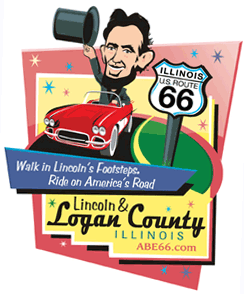| ||||||||||
| ||||||||||
"This is the world's oldest fraternity and it has an old and distinguished history," Crociata says. "There's much beauty to be found in its ritual. On the other hand, it's a fraternity, not a religion. It's a place to get together with guys that you know, that you trust, that you are willing to trust. A place where you can speak from the heart, if you want." No official gathering is taking place at the hall on this recent afternoon, so it's all right for a reporter to have a look around. The Naval Masonic room has features common to other lodges, such as the Mason emblem, a set square and compass and letter "G" (for both God and Geometry), and some decorative images, such as the Egyptian-styled eyes and snakes painted throughout. Brown's book moves quickly among such Washington landmarks as the Library of Congress and the Washington Monument and draws upon the Masons' very public presence in Washington, dating back more than 200 years George Washington used a Masonic gavel and trowel in 1793 as he lay the cornerstone of the U.S. Capitol. The same trowel would be included 55 years later when President James K. Polk, a Mason, presided over the laying of the cornerstone of the Washington Monument, and again in 1907 when President Theodore Roosevelt, also a Mason, laid a cornerstone for a Masonic temple. According to "Freemasons for Dummies" author Christopher Hodapp (his book is so well regarded at the Naval lodge in Washington that it's kept in a glass cabinet outside the meeting room), membership peaked in the United States just after World War II, when there were close to 5 million Masons. The number dropped in the 1960s, when the Masons seemed hopelessly antiquated to a rebellious generation, and dropped again in the late 1980s as older members died. Hodapp, himself a Mason based in Indianapolis, says there are now around 1.5 million in the U.S. and 3 million worldwide. "But it's picking up again, in part because of people like Brown and (novelist) Brad Meltzer ('Book of Lies,'
'Book of Fate'). Younger men are seeing popular references to it. We're also seeing people from single-parent households who don't have that kind of brotherhood feeling you get in the lodge," Hodapp says. Meetings at the Naval Masonic room are presided over by a Master who sits in a high-backed chair on the East side of the room, in honor of where the sun rises. On the South and West are chairs for the top aides, the senior warden and the junior warden. Only the North, "a place of Masonic darkness" (a belief related to the lighting of Solomon's Temple) is not represented.
Every lodge has an altar on which is placed a holy book, or books. A Bible is usually there, but because only a belief in a higher being is required, a Quran or other religious text might be found, depending on the religious faith of the members present. The black and white squares of the checkered floor below the altar represent "good" and "evil," terms the Masons resist defining too closely. "As far as what is good and bad for any individual ... the idea is to inspire thought on some of the important questions of life on the minds of our members so that they can go home and think about them and draw their own conclusions," Crociata says. Would-be members pass through three degrees of acceptance: Entered Apprentice, Fellow Craft and Master Mason. In "The Lost Symbol," Brown describes an initiation ceremony that Hodapp says is essentially accurate. A man is blindfolded, has a dagger pressed against his chest and is instructed to vow that, "uninfluenced by mercenary or any other unworthy motive," he will offer himself as "a candidate for the mysteries and privileges of this brotherhood." Brown is not a Mason, but said that working on the novel helped him imagine a time when religious prejudice would disappear and added that he found the Masonic philosophy a "beautiful blueprint for human spirituality." He was tempted to join, but, "If you join the Masons you take a vow of secrecy. I could not have written this book if I were a Mason," he says. And now? "They've let me know the door is always open."

[Associated
Press;
Copyright 2009 The Associated Press. All rights reserved. This material may not be published, broadcast, rewritten or redistributed.
News | Sports | Business | Rural Review | Teaching & Learning | Home and Family | Tourism | Obituaries
Community |
Perspectives
|
Law & Courts |
Leisure Time
|
Spiritual Life |
Health & Fitness |
Teen Scene
Calendar
|
Letters to the Editor